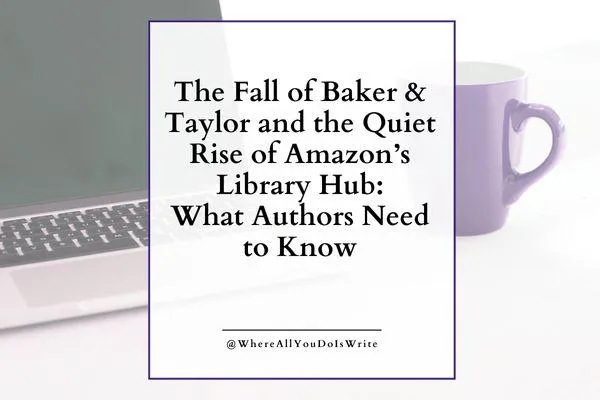
The Fall of Baker & Taylor and the Quiet Rise of Amazon’s Library Hub: What Authors Need to Know
Let’s call this what it is: a seismic shift.
When Baker & Taylor announced it was shutting down, the library world went into chaos. For decades, B&T wasn’t just a wholesaler—it was the bloodstream of public libraries. They handled cataloging, metadata, shelf-ready copies, and those beautiful backlist orders librarians rely on to keep shelves alive.
Now? Orders are canceled, shipments delayed by months, and librarians are scrambling to rebuild workflows from scratch.
If you’re an author, this may sound like background noise—but it’s not. It’s the kind of industry tremor that quietly changes where and how your books get discovered.
Ingram and Bookazine are stepping up—but Amazon is watching the door.
Libraries are already pivoting. Ingram’s building capacity like mad, rolling out new cataloging systems and hiring staff to absorb the overflow. Bookazine, the 100-year-old indie distributor, is suddenly having a glow-up—serving 100+ new library accounts practically overnight.
But let’s be honest: no one scales faster than Amazon.
Behind the scenes, Amazon’s been knocking on library doors. They’ve launched Amazon Business Books for Libraries, complete with a Library Hub that lets libraries order new and upcoming titles directly through Amazon—MARC records and all—with discounts up to 40% off.
Sounds convenient, right? It is. That’s the problem.
Here’s where it gets messy.
If libraries start sourcing primarily through Amazon, it means the world’s largest retailer now controls yet another pipeline between books and readers, and that pipeline is powered by algorithms, not librarians.
That might not sound terrible if you’re already thriving on Amazon. But for authors who rely on discoverability in library catalogs—not retail rankings—it’s risky. Amazon doesn’t play by the same metadata rules librarians do. They optimize for sales velocity, not shelf longevity.
Translation: the titles that already dominate Amazon will dominate libraries too. Smaller presses, debut authors, and midlist titles could find themselves invisible—again.

What this means for you (and what to do next)
If you’re an author, here’s your new reality: library sales are shifting from relationship-driven to data-driven. You can still win here—but you have to be intentional.
1. Clean up your metadata.
Your BISACs, Thema codes, and descriptions should work for both retail and library systems. A sloppy metadata record means you don’t exist.
2. Diversify distribution.
Don’t rely on Amazon to reach libraries. Make sure your titles are listed through IngramSpark, Draft2Digital, PublishDrive or a distributor libraries already use.
3. Talk to librarians.
Seriously! Email them, visit, build relationships. Librarians still champion the books they believe in, even if the system changes.
4. Keep your backlist strong.
Libraries love backlist titles. They’re less risky, often more enduring. Keep your metadata fresh so your older books stay visible.
The bigger picture
This isn’t just about Baker & Taylor’s fall. It’s about who gets to define access to books. Baker & Taylor built its legacy on serving libraries and readers. Amazon builds its empire by serving algorithms and convenience.
If we’re not careful, the library ecosystem could slide from a place of curation to one of consolidation. And that hurts everyone—especially the authors trying to make their stories discoverable in a world increasingly optimized for speed instead of substance.
Publishing is shifting again. The question isn’t whether you’ll keep up. It’s whether you’ll do it on your terms or Amazon’s.
